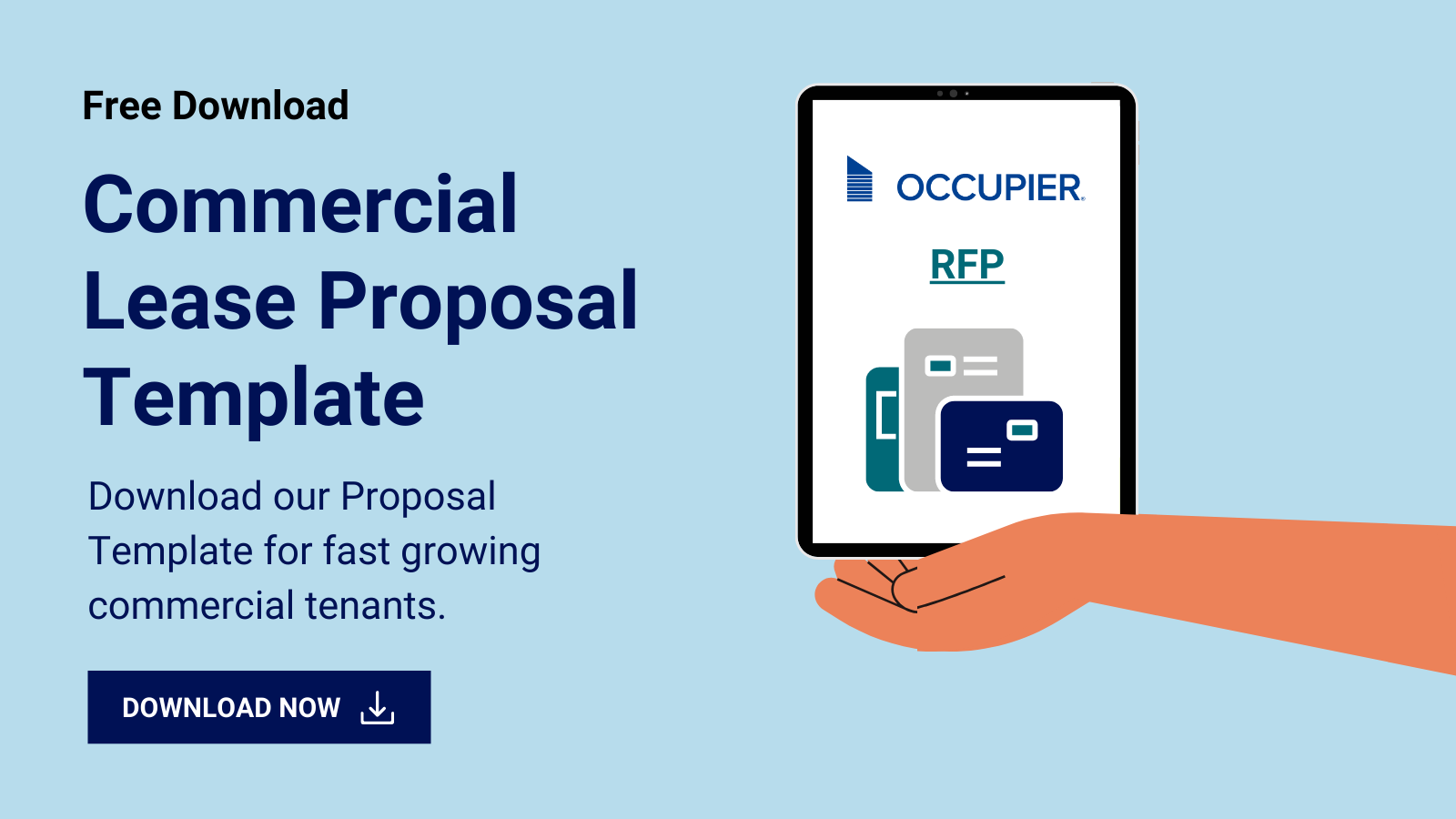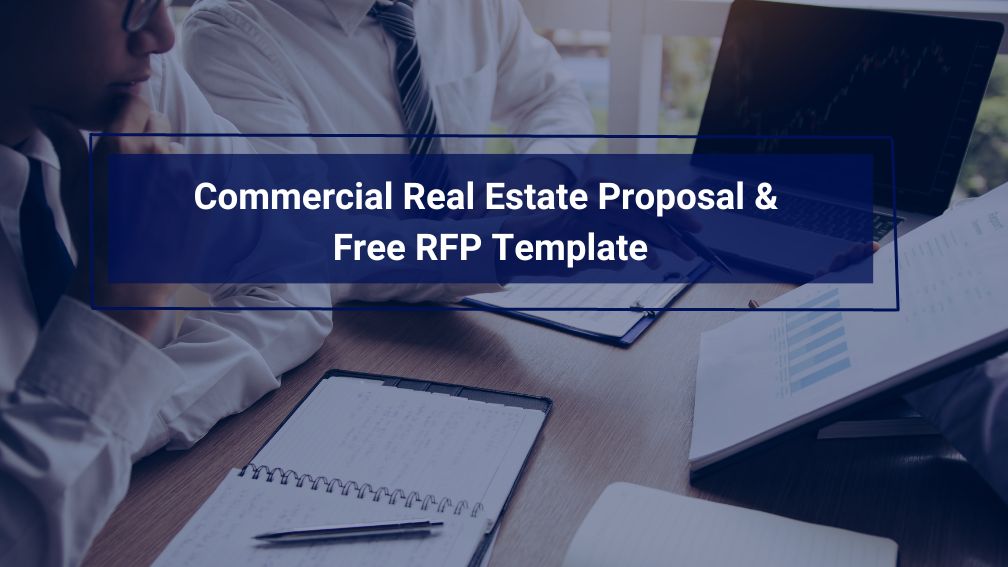

Are you looking to craft a compelling commercial lease proposal that not only captures attention but also significantly increases your chances of closing the deal? You’ve come to the right place! This guide will provide invaluable insights into developing the perfect commercial lease proposal.
A commercial lease proposal delineates the terms and conditions for leasing a commercial property. It represents your offer to lease the space, encompassing comprehensive information about your intended use of the premises, the duration of the lease, expected rental rates, and any pertinent specifics.
Additionally, we’ll introduce you to our comprehensive proposal template designed to simplify the process. With the perfect blend of expert guidance and an easy-to-use template, as a tenant-rep broker or in-house transaction manager, you will be well-equipped to create proposals that facilitate a smoother negotiation process. So, let’s dive in and elevate your proposal game!
A successful commercial lease proposal relies on a solid foundation that highlights its key components. As a tenant-rep broker or in-house transaction manager, your goal is to maintain a level playing field with the landlord you are negotiating with.
Therefore, a well-crafted proposal should include a clear overview of the lease terms most relevant to either your client or your own business needs. By addressing these critical aspects, you create a strong foundation for an effective lease negotiation.
In order to do that, you need to not only understand current market conditions but also understand your commercial tenants’ non-negotiable and nice-to-haves, in order to create a business proposal that is agreeable to both parties.
Getting real estate transactions done quickly and efficiently requires a winning proposal content to negotiate with potential landlords and make happy commercial clients. Here are our top 8 sections to include in your commercial property proposal:
This section should clearly state the length of the lease, whether it’s a fixed-term lease or a month-to-month lease, and are there any renewal options or extension or expansion options? It’s important to include this information upfront to avoid any confusion or misunderstandings later in the negotiation process.
It’s important for your tenant to have a clear understanding of their financial responsibilities. The rent obligations section should outline the amount of rent due, when it is due, is there room for a month or two of free rent and any other payment terms, such as prorated rent, late fees, or penalties. It’s also a good idea to include information about any rent escalations, such as annual increases or percentage rent clauses or adjustments based on changes in the consumer price index, CPI.
This section should specify the amount of the security deposit required and any conditions for its refund or forfeiture, such as damage to the property or unpaid rent. In addition, painting a detailed picture of how the letter of credit for the security of deposit will be drafted is important. Plus, this level of detail will impress prospects.
This section should describe the permitted uses of the property and any restrictions or exclusions on the tenant’s use, such as restrictions on subleasing, noise levels, or hours of operation. If the tenant requires exclusive use of the property for a specific purpose, such as a restaurant or a retail store, that should also be included in this section.
Is it the landlord’s or tenant’s responsibility for maintaining the property? Office buildings may have cleaning services as part of the lease agreement. Whereas a retail lease may have differing expectations on cleaning and repairs. This section should clearly outline any utilities or services that the landlord will provide or bill the tenant for, such as electricity, gas, water, or trash removal. These business services can be an added expenditure for you tenant and an area to negotiate on.
A personal guarantee is a promise by an individual to pay rent or other obligations if the tenant fails to do so. This section should describe the terms of any personal guarantee required by the landlord, including the duration and scope of the guarantee. For first-time commercial space tenants, understanding this potential personal liability is crucial.
This section should describe the circumstances under which the lease may be amended, modified, or terminated, and the procedures for doing so. It’s important to include this information upfront to avoid any confusion or misunderstandings later in the negotiation process. The commercial real estate industry is ever-changing, so clarity on the expectations here is important.
This section should describe the tenant’s ability to sublease the property or assign the lease to another party, and any conditions or restrictions on doing so. If the landlord requires the right to approve any sublease or assignment, that should also be included in this section.

We understand that creating a proposal from scratch can be time-consuming and daunting. That’s why our comprehensive template is designed to streamline the process and ensure you cover all essential elements. By using our template, you’ll have the framework from which to begin negotiations with the landlord.
Including key terms such as base rent, free rent, lease duration, maintenance responsibilities, and tenant improvement allowances, critical lease clauses, our template ensures you address every aspect imperative to drafting a successful lease proposal.
Our template provides an extensive framework designed to cover every crucial aspect upfront, ensuring that no critical elements are left open for interpretation during the lease negotiation. This comprehensive approach protects the tenant’s interests by preventing the landlord from gaining the upper hand due to overlooked details. An executive summary, accompanied with quality visuals, an aerial map, sales comps, location information will not only impress your prospects but make you competitive in the negotiation stages with the landlord. The Occupier commercial lease proposal template can be easily adapted to suit various property types and client requirements.
1.Understand the Client’s Needs: The first step in writing a successful commercial real estate proposal is to understand the client’s needs. What are they looking for in a commercial property? What type of business are they in? What is their budget? These are all important questions to ask before you start writing your proposal.
2. Highlight the Key Lease Terms: As mentioned above, your proposal should include a clear overview of the lease terms most relevant to either your client or your own business needs. Be sure to highlight these key terms throughout the proposal, including rent, lease term, options to renew, and any additional fees or charges.
3. Provide Supporting Documents: In addition to the proposal itself, you should provide supporting documents that back up your claims and provide additional information. This could include market research, property photos, floor plans, and financial projections.
4. Customize Your Proposal: While it’s okay to use a template as a starting point, make sure you customize your proposal to fit the specific needs of your client and the property you are presenting. Tailoring your proposal to your client’s unique needs and preferences will make it more compelling and increase your chances of success.
5. Keep it Professional: Your commercial real estate proposal should be professional and well-written. Use clear and concise language, avoid jargon or technical terms, and make sure your formatting is consistent and easy to read.
6. Follow up: Once you’ve submitted your proposal, don’t be afraid to follow up with the landlord or property owner to gauge their interest and answer any questions they may have. This will show your commitment to the process and your willingness to work collaboratively to reach an agreement.
Leveraging our comprehensive template, tenant-rep brokers and in-house transaction managers will be well-equipped to create persuasive and engaging proposals that facilitate a smoother transaction. Transaction management software makes this entire process much easier. Occupier was founded by tenant-rep brokers who found there was limited software available from high-quality tenants to collaborate with their commercial brokers. So they built one. Occupier is the only commercial tenant software built to manage the entire lease lifecycle from — site selection to critical date management and lease accounting compliance. Schedule a demo with Occupier to improve your proposal game and win more client business.